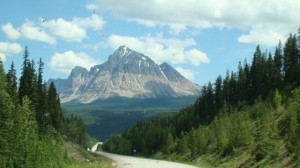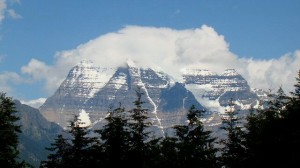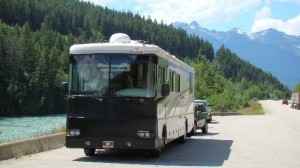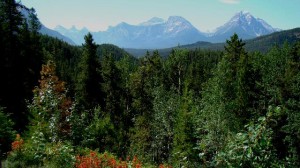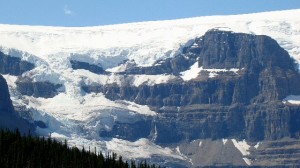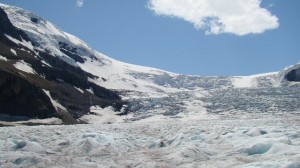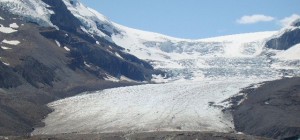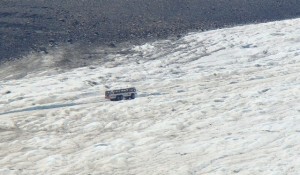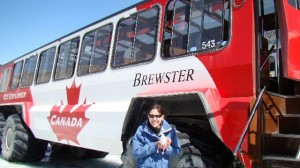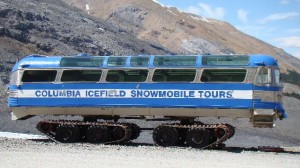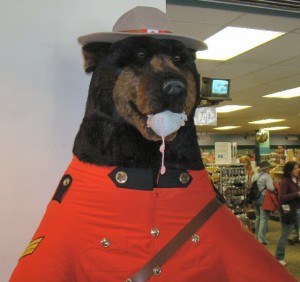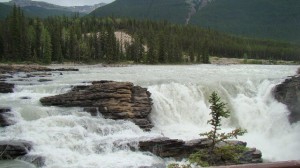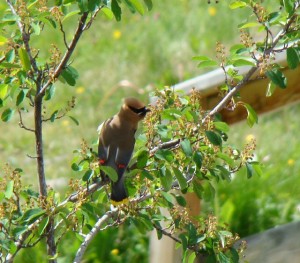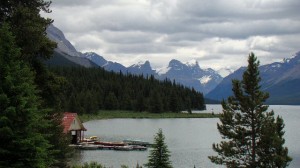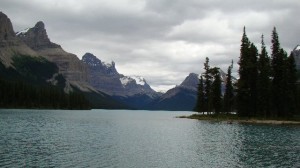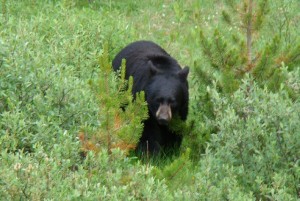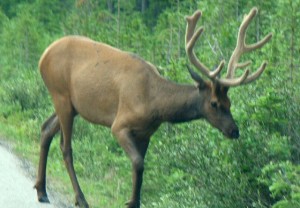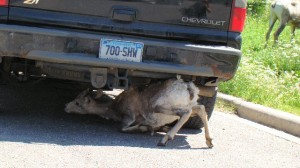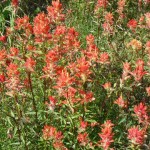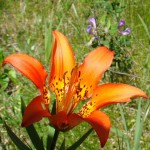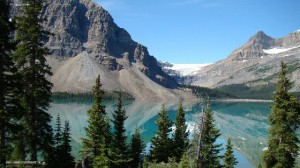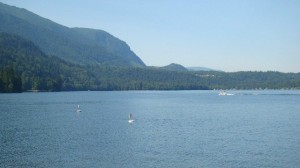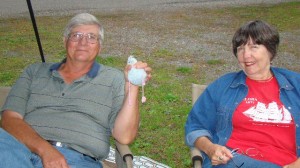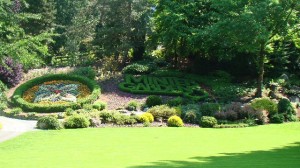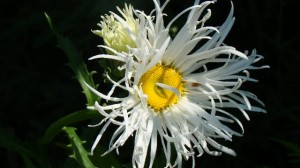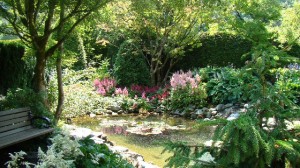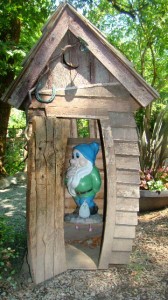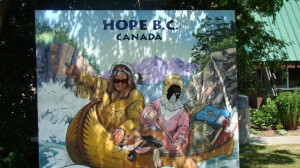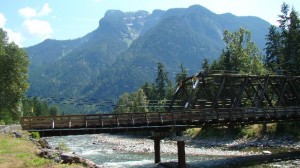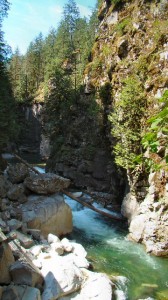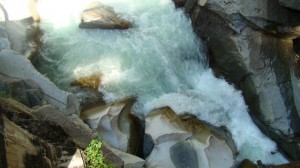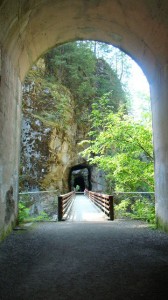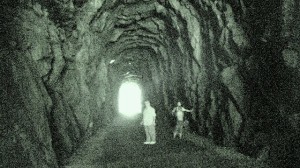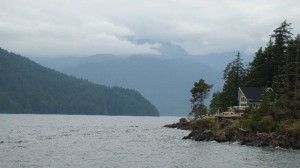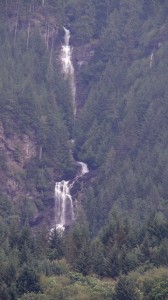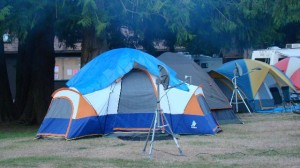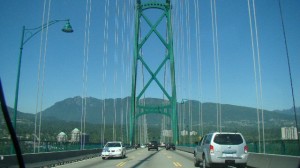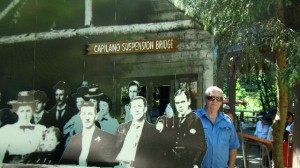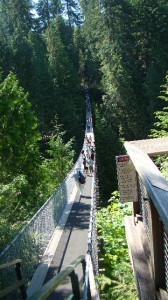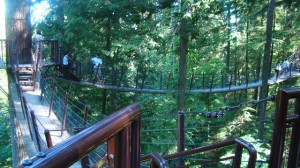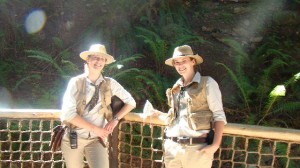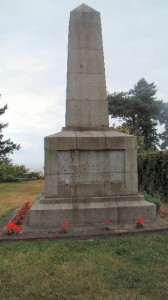We woke up bright and early and left Clearwater to make our way to Jasper AB. Although the road was a fine one, our progress was slow because we were stopping every chance we could get in order to take pictures. Thankfully we had a windshield, because our dropping jaws, in awe of the scenery, left us with mouths wide opened most of the way, and judging by the amount of flies and bugs corpses on the window, there would have been no need for supper, our recommended daily intake of proteins having been met for the day.
We followed the North Thompson River going up on Hwy 5Â and then the Frazier on Hwy 16, that’s where we found a pull-out right next to the river, with a wonderful view of Mount Robson, the tallest mountain in the Canadian Rockies at 12, 972 ft, Â and decided that would be a good place for a light lunch.
We arrived in Jasper early afternoon. I was a little apprehensive at the thought of camping with no “hook-ups†for 4 nights. Although the motorhome is self-contained and we can camp without being connected to services, I am not particularly found of it. My idea of “roughing it†is camping with full services, being able to use my washer-dryer and of course, satellite TV and having a Wi-Fi connection make things even sweeter. Turns out, we were fine. Totally disconnected from the world, off the grid, we explored the area all day, and returned, tired but happy. We read a book and then watched a pre-recorded movie before turning in early so we would be in shape for another day of exploration. Jasper turned out to be our favorite part of the Canadian Rockies. Every curve of every road brought a new amazing vista. Turquoise lakes surrounded by snowy peaks, meadows of wild flowers rushing milky-water rivers leading to waterfalls were plentiful.
The first day we took the Icefield Parkway, which offers a stunning view of over 100 glaciers on the way to the Columbia Icefield
When snow falls year after year on high mountain peaks and plateaus, there is very little summer melt so it accumulates. When the snow is about 100 ft deep, the bottom layer is so pressurized it turns into ice. When more snow falls on top, the ice becomes thicker and thicker, eventually it overflows into the surroundings, flowing downhill. That is how a glacier is born. The intense pressure at the bottom of a glacier causes the ice to become “plasticâ€. It conforms to the bedrock irregularities without breaking or cracking, but the upper layers are brittle, they crack open into giant crevasses when subjected to stress.
The Columbia Icefield is 130 square miles, which makes it the largest body of ice in the Rocky Mountains. Its average elevation is 10, 000 ft and it is estimated that its greatest depth is about 1, 200 feet. It drains into 3 oceans, the Pacific, the Atlantic and the Artic. In order to view it, one would have to take a helicopter tour.
So, we settled on visiting the Athabasca glacier which is easily accessible.
One of the many glaciers fed by the Columbia Icefield it is he only one where you can take an excursion on the surface in a massive Ice Explorer.
Only 23 of these beasts were ever built, and Brewster, our tour company, owns 22, the other one belongs to US government and is used in Antarctica to transport scientists. Cool huh? Bear was really impressed when he learned that each tire of this monster-machine costs $5, 000 and there are 6 per vehicle… you do the math.
Marianne, our Ice-Explorer driver just completed a Pedagogy Degree at the University of Sherbrooke in Québec. She went on a trip with her girlfriend and fell in love with the area. She also thought it would be really cool to drive the big monster-buses, so she applied and she is now happily teaching everything about the Athabasca glacier to tourists while she drives some of the biggest vehicles in existence today.
After going down a moraine with a 32° slope and driving up the glacier, she let us out. There we were, walking on about a thousand feet deep of ice, some people were drinking the melting waters, we just concentrated on walking without falling on our butt or into a crevasse, but it was one of the coolest things we ever did!
The first Ice-Explorers were giant snowmobiles, without any suspension or opening windows, thus the nickname; “Shake & Bakeâ€.
Chicken got in trouble again! This time with a Bear/Mountie who thought he looked delicious!
The road follows the Athabasca River, its waters milky from all the silt or “rock flour” coming from the melting glacier. It flows north and eventually, the water from the Athabaska finds its way to the Arctic Ocean
The rushing water carved its way into very pretty falls along the way.
The second day we took Maligne rd, which took us all the way to Maligne Lake, where one of the most famous pictures of the Rockies was taken.
On the way, we passed by Medecine Lake.
This lake was considered “magic” or “big medecine” by the Indians because around October, it vanishes being replaced by a shallow stream and a few small pools. The depth of the lake can vary by 20m (65 feet). The lake does not appear to have any visible outlet, so the Indians feared it. The truth is,  this part of the Maligne Valley was severely fractured during the uplift. The water seeped into the cracks and slowly dissolved a network of underground passages. When the cool weather comes, there is less meltwater, the inflow is less than the drainage into the caves, and the lake disappears.
That’s where we were lucky enough to catch a picture of the elusive Pika.
This cute animal, the size of a hamster, not a rodent, he is herbivore. He is also called “Rock Rabbit”. He is quick and blends very well with his surroundings, which makes him very hard to spot. Quickly disappearing, the Pika is being considered for protection under the “Endangered Species Act”.
And then we saw this bird in a tree, I had never seen one like it.
Then we had lunch at Maligne Lake, our destination for the day.
We took a cruise to Spirit Island, where in 1930, a photographer took a black and white picture of the lake and won the Kodak Picture contest that year. He named the picture Spirit Island because he thought it captured the “spirit” of the Rockies. He waited 3 days for the perfect conditions for his picture, unfortunately, we had a cloudy day and could not wait that long.
On our way back, we spotted Yogi Bear in his quest for lunch!
On our last day in Jasper NP, we took small roads, had lunch at the Pocahontas Lodge which claims to serve the “best liver and onions dinner in Alberta”. The Miette rd leads to a Hot Spring, but along the way, there is a lot of wildlife….
and amazing wild flowers! The license plate of Alberta reads “Wild Rose Country”. They grow all over the place.
Other gorgeous wild flowers seen along the way
Alas, we had to leave, but we were going to Banff National Park, which promised to be as beautiful and grand as Jasper.  It was a perfect day when we took the road, and we captured some of the best looking pictures so far.
